8.4 /10 1 Votes8.4
7.7/10 FreeROMS Director(s) Takao Shimizu Initial release date 1 August 1998 | 4.5/5 Emuparadise Publisher(s) Nintendo Artist(s) Tatsuya Hishida Series Pokémon Genre Strategy video game | |||||||||||||||||||||||||||||||||
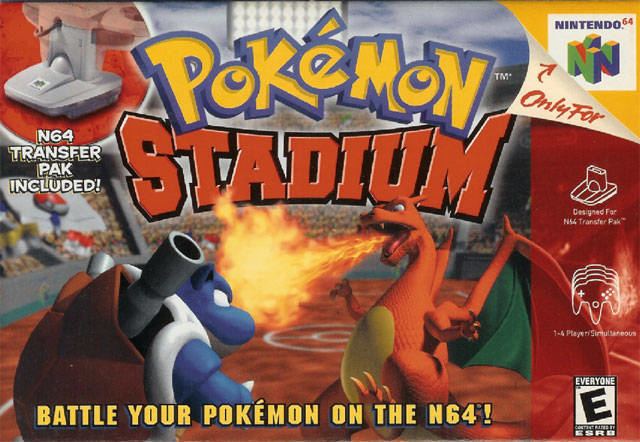 | ||||||||||||||||||||||||||||||||||
Producer(s) Kenji MikiTsunekazu IshiharaSatoru IwataShigeru Miyamoto Composer(s) Kenta NagataHajime WakaiToru Minegishi Mode(s) Single-player, multiplayer Similar Pokémon games, Nintendo games, Fighting games | ||||||||||||||||||||||||||||||||||
Pok mon stadium n64 gameplay video capture test
Pokémon Stadium (ポケモンスタジアム2, Pokemon Sutajiamu Tsū, lit. "Pokemon Stadium 2") is a strategy video game developed and published by Nintendo for the Nintendo 64 video game console. It was released on April 30, 1999, in Japan, March 6, 2000, in North America, March 23, 2000, in Australia, and April 7, 2000, in Europe. Despite it being the first Stadium title in Western regions, the game is a sequel to the 1998 Nintendo 64 game Pokémon Stadium (ポケモンスタジアム), which was only released in Japan. Gameplay is built around a 3D turn-based battling system using the 151 creatures from the Game Boy games Pokémon Red, Blue, and Yellow.
Contents
- Pok mon stadium n64 gameplay video capture test
- Hilltop stream amazing new pok mon stadium card makes water and fighting decks much better
- Development
- Gameplay
- Additional features
- Reception
- Legacy
- References
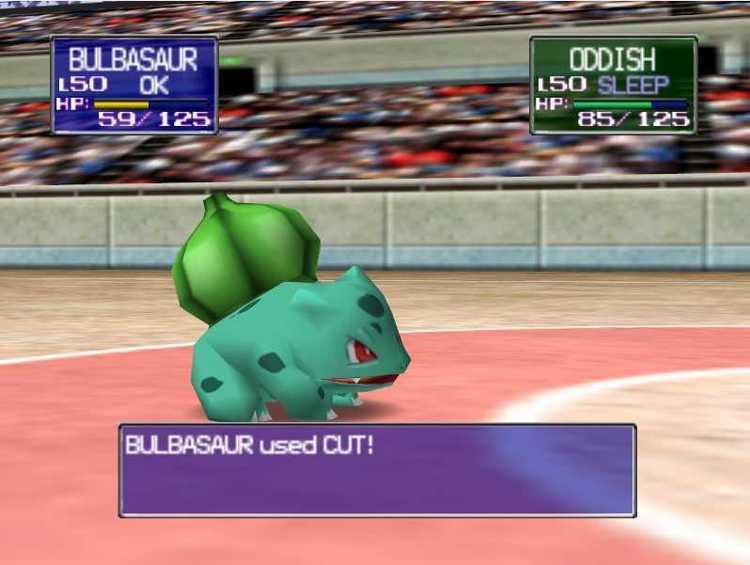
Using the Transfer Pak accessory that was bundled with the game, players are able to view, organize, store, trade, and battle with their own Pokémon uploaded from Pokémon Red, Blue, and Yellow. One main focus of the game is completion of the four stadium cups, each of which is a series of three-on-three Pokémon battles against an ordered lineup of opponents. Another battle mode called Gym Leader Castle allows battles against the eight Kanto gym leaders and the Elite Four. Other features of Pokémon Stadium include mini-games, versus-style battles, a hall of fame, compatibility with the Game Boy Printer, and a built-in emulation function for Pokémon Red, Blue, and Yellow.
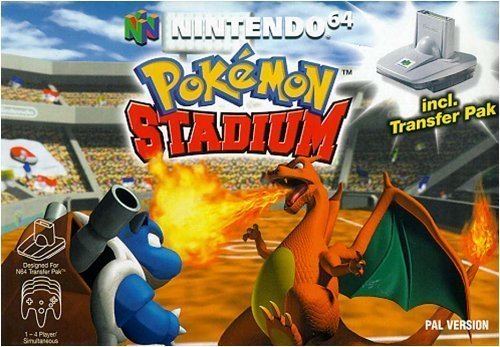
Pokémon Stadium went on to become one of the Nintendo 64's best-selling titles, reaching one million copies sold before the end of 2000. Critical reception of the game was mixed, with critics praising the game's visuals but finding fault with the audio quality. A sequel, Pokémon Stadium 2, was released in English-speaking regions in 2001 as a counterpart for the next-generation Pokémon Gold, Silver, and Crystal games.
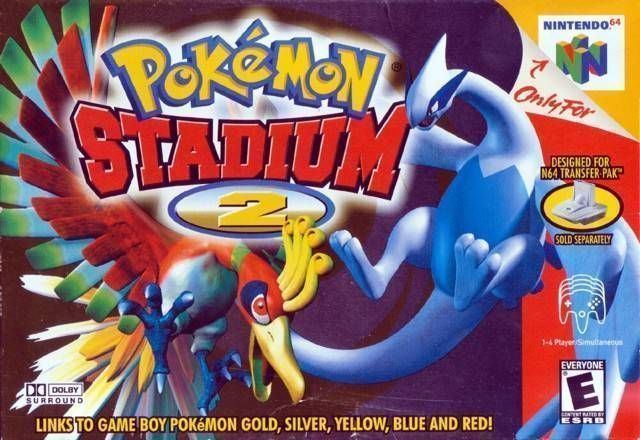
Hilltop stream amazing new pok mon stadium card makes water and fighting decks much better
Development

The first Pocket Monsters' Stadium was released in Japan on August 1, 1998. Once intended as a Nintendo 64DD launch title with a March 1998 release date, it was instead converted to a standard Nintendo 64 game on a 32MB cartridge. Because of technical limitations, this version features only 42 Pokémon available for battle, instead of the full 151 Pokémon from the Game Boy versions as originally planned. The remaining Pokémon can be viewed in a Pokémon encyclopedia called the Pokédex, but the models lack the required animations for battle. Connectivity with the Pokémon Game Boy trilogy is available using the Transfer Pak. The game sold a reported 270,000 copies in its first month of release. This version was not released outside Japan, and as such the numbering of the subsequent 2 is ahead of the North America releases.
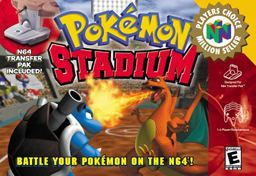
On February 16, 1999, Nintendo announced that it would be showing Pokémon Stadium 2 in a Japan-exclusive event called Pokémon Festival '99. Early reviews of the game from Japan's Weekly Famitsu Crew were favorable. Because the first game had met criticism for its difficulty, the AI was toned down for the sequel to make it easier for average players. Released as Pokémon Stadium throughout North America and Europe, this version supports the transfer of all first generation Pokémon to and from Pokémon Red, Blue, and Yellow via the N64 Transfer Pak. Nintendo also released a limited edition bundle in North America that included Pokémon Stadium, a Transfer Pak, a Nintendo 64 console, two controllers, a poster, the strategy guide by Prima Games, and a "Cool Porygon" trading card.
Gameplay
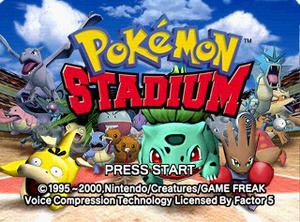
Unlike Pokémon Red, Blue, and Yellow, Pokémon Stadium does not have a storyline, meaning that it is not considered a role-playing video game. Instead the game challenges the player to defeat trainers at the Stadium, a tournament consisting of four "Cups" and 80 battles in total, as well as the Gym Leader Castle, where the player battles the eight Kanto Gym Leaders, the Elite Four, and the Champion. When all Cups have been won and the Gym Leader Castle is completed, a battle against Mewtwo will be unlocked. Defeating Mewtwo unlocks another round of Stadium, Gym Leader Castle, and the Mewtwo battle, but with higher AI difficulty.
In Stadium mode, the player is challenged to earn trophies by winning the Pika Cup, Petit Cup, Poké Cup, and Prime Cup, each having its own set of rules and restrictions. In the Poké and Prime Cups, four trophies may be earned, one for each level of difficulty, but the Pika and Petit Cups only award one trophy each. After choosing a Cup to compete in, the player decides on a party of six Pokémon, which may include available rental Pokémon and/or Pokémon imported from a Game Boy cartridge. In each battle, the player and the opponent are only allowed to use three of their six Pokémon. The player wins a trophy after successfully completing all battles in a Cup.
In the Gym Leader Castle, the player initially challenges the eight Kanto Gym Leaders from the Game Boy games, followed by the Elite Four, and finally the Champion. Before battling a Gym Leader, however, the player must defeat a gym's three Pokémon trainers. Like in the Stadium, the player has to pick a team of six Pokémon, either rental or imported, and may only use three at a time for battling. Each time the player defeats the Elite Four, one of eight randomly selected prize Pokémon will be awarded, which can be transferred to the player's Pokémon Red, Blue, or Yellow game using the Transfer Pak. The prize Pokémon are Bulbasaur, Charmander, Squirtle, Hitmonlee, Hitmonchan, Eevee, Kabuto, and Omanyte.
Additional features
In a Free Battle, up to four players may battle each other using rental Pokémon and/or those imported from cartridges. Rules may be tournament official or custom-made.Pikachu from Pokémon Yellow can say its name when you use it from the trainer icon on the Pokémon section screen.
At the GB Tower, the player's Pokémon Red, Blue, or Yellow can be played on the Nintendo 64. Winning Stadium cups eventually unlocks double and triple speed upgrades.
Victory Palace contains statues of Pokémon who have beaten the Elite Four in Gym Leader Castle or completed the highest round of a tournament in the Stadium.
Battle Now! is a battle arena for a quick battle with one or two players where each opponent has a pre-selected team of Pokémon.
In an Event Battle, two players can use Pokémon from their Game Boy games in a battle with custom rules.
The Gallery is where the player can take photos of Pokémon to be printed at a Pokémon Snap Station.
The Pokémon Lab is only accessible if a Game Boy cartridge is plugged into the Transfer Pak. If the game is saved in a Pokémon Center, the player may access a PC for arranging boxed Pokémon and items. The Lab also has an interactive Pokédex and a machine for trading between two plugged-in cartridges. Players cannot transfer rental Pokémon, including the Mew obtained at a Nintendo promotional event, to Pokémon Red, Blue, and Yellow.
Kids Club is home to nine Pokémon-themed mini-games, which can be played either as stand-alone games or as part of a tournament. One to four players may participate, with unused player spaces being controlled by the computer. A higher difficulty level can also be unlocked.
Reception
Pokémon Stadium received mostly mixed reviews from critics. GameSpot contributor Jeff Gerstmann gave the game a 5.7 "mediocre" review, writing that the gameplay "feels scaled down and oversimplified, even when compared with the original Game Boy games". IGN's Peer Schneider wrote an 8.2 "great" review of the game, calling it "a must-buy for Pokémon fans", but also citing that "the audio is nowhere near the quality of some of the recent Nintendo releases". Regarding the game's announcer, a frequent complaint among critics, RPGamer's Ben Martin wrote that: "With a very limited vocabulary and continual comments thoughout [sic] every single action, it certainly is a nice option to be able to turn this guy off". In his review on gaming website Cubed3, Ross Morley praised the game's battle system for its "beautiful 3D models, special effects and range of options".
In its first month of sales in North America, Pokémon Stadium sold over one million copies, and it became the best-selling console game in the region during the year 2000. Nintendo of America announced that it would be released as a Player's Choice title, a well-selling game with a lower suggested retail price, on December 26, 2000. Approximately 3.97 million copies have been sold: 3.16 million in the United States, 710,765 in Japan, and 100,000 in the United Kingdom
Legacy
Only months after its debut, a follow-up to Pokémon Stadium, tentatively titled Pokémon Stadium Gold/Silver, was announced by Nintendo. The game was released in 2000 and 2001 as Pokémon Stadium 2, featuring the 251 Pokémon from the first two generations. Transfer Pak compatibility was included for Pokémon Gold, Silver, and Crystal as well as Red, Blue, and Yellow.
